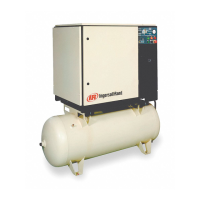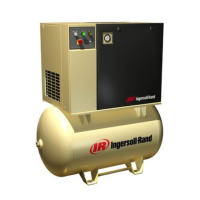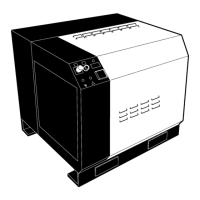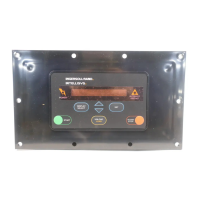http://air.ingersollrand.com 45
OPERATION AND MAINTENANCE MANUAL MAINTENANCE
DISASSEMBLING THE UNIT
The unit has been designed and constructed to
guarantee continuous operation.
The long service life of some components such as the
fan and compressor depends on good maintenance.
The unit must only be disassembled by a refrigerant
specialist.
Refrigerant liquid and lubricating oil inside the
refrigeration circuit must be recovered in compliance
with current norms in the country where the machine is
installed.
RECYCLING DISASSEMBLY
Frame and panels Steel / epoxy resin polyester
Heat exchanger (cooler) Stainless steel
Pipes Copper
Insulation Gum synthetic
Compressor Steel / copper / aluminium
/ oil
Condenser Aluminium
Refrigerant R134a
Valve Steel
REFRIGERANT LEAKS IN THE REFRIGERATION
CIRCUIT
The unit is despatched in perfect working order, already
charged.
Refrigerant leaks may be identied by tripping of the
refrigeration overload protector.
IF A LEAK IS DETECTED IN THE REFRIGERANT CIRCUIT,
SEEK TECHNICAL ASSISTANCE.
REFRIGERANT CHARGING
THIS OPERATION MUST ONLY BE PERFORMED BY A
REFRIGERANT SPECIALIST.
WHEN REPAIRING THE REFRIGERANT CIRCUIT,
COLLECT ALL THE REFRIGERANT IN A CONTAINER
AND DISPOSE OF IT IN THE APPROPRIATE MANNER.
CHARACTERISTICS OF REFRIGERANT R134A
In normal temperature and pressure conditions the
above refrigerant is a colorless, class A1/A1 gas with TVL
value of 1000 ppm (ASHRAE classication).
If a refrigerant leak occurs, thoroughly air the room
before commencing work.
TROUBLESHOOTING
TROUBLE CAUSE ACTION
Solenoid
condensate
valve will
not close.
Debris in solenoid
valve prevents
diaphragm from
seating.
Remove
solenoid valve,
disassemble,
clean and
reassemble.
Short in electrical
component.
Check and
replace power
cord or timer as
needed.
Drain timer
will not
operate.
No electrical supply. Apply power.
Timer malfunction Replace timer.
Clogged port. Clean valve.
Solenoid valve
malfunction.
Replace
solenoid valve.
Clogged strainer. Clean strainer.
MAINTENANCE
Periodically clean the screen inside the valve to keep
the drain functioning at maximum capacity. To do this,
perform the following steps:
Close the strainer ball valve completely to isolate
it from the air receiver tank.
Press the TEST button on the timer to vent the
pressure remaining in the valve. Repeat until all
pressure is removed.
CAUTION
High pressure air can cause injury from
ying debris. Ensure the strainer ball valve is
completely closed and pressure is released from
the valve prior to cleaning.
3. Remove the plug from the strainer with a
suitable wrench. If you hear air escaping from
the cleaning port, STOP IMMEDIATELY and repeat
steps 1 and 2.
4. Remove the stainless steel lter screen and clean
it. Remove any debris that may be in the strainer
body before replacing the lter screen.
5. Replace plug and tighten with wrench.
6. When putting the Electric Drain Valve back into
service, press the TEST button to conrm proper
function.
1.
2.

